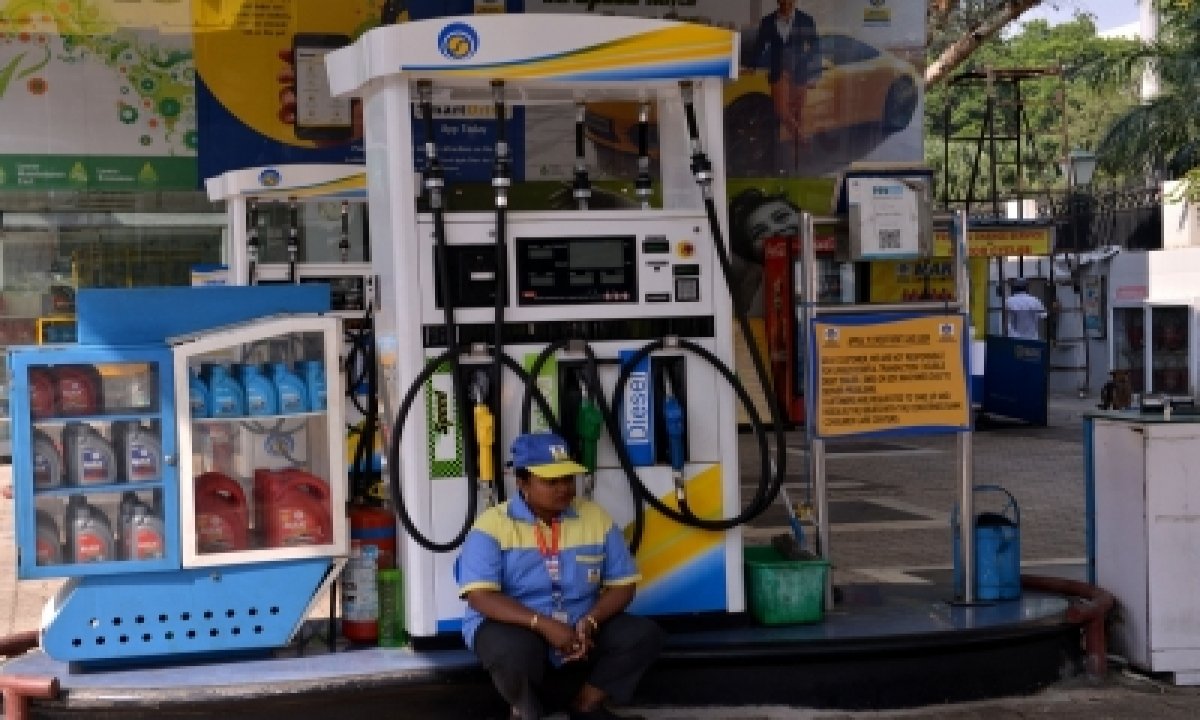
Have you ever wondered that the government takes away more than 50 rupees out of every 100 rupees worth of petrol or diesel that you buy at a Petrol Pump or a Filling Station? The Central government gets the lion’s share of 29 rupees and the states the balance. However, in 2021 the government share was as high as 60 rupees. Dehra Dun-based veteran journalist RAJ KANWAR has the answer!
The elections in the five states’ in February 2022 had prompted the Central government to reduce the excise duty roughly by Rs 5 on petrol and Rs 10 on diesel. Likewise, the States too were urged to commensurately reduce the VAT on petrol and diesel in order to give relief to the consumers. As a result the selling price of both the petrol and diesel had considerably come down at the point of sale.
Post the elections results on March 10, the government took a breather for about 10 days before returning with a vengeance to its price-raising ritual. Rather than increasing the retail price in one go, the BJP government at the Centre instead resorted to a daily dose of price rise. Starting from March 22, prices were increased each day by about 80 paise. Thus the price per litre of both diesel and petrol saw an increase of Rs.6.40 in the last 10 days of March alone.
This ritual of daily rise in prices also continued during the first six days of April when the retail price of both diesel and petrol saw an increase of 80 paise every day. Perhaps bored with the monotonous routine of daily price increase, both the oil marketing companies and the government then took a much needed respite for the following 17 days during which the prices had remained unchanged.
It is being officially claimed that the oil marketing companies daily revise the fuel prices in line with the ‘benchmark international prices and foreign exchange rates’. Such a claim does not hold water considering that daily retail fuel prices continued to be revised upward irrespective of any decline in international crude prices or the exchange rate. Consider the following: A barrel of Brent Crude on 21 March 2022 costs $122.29. Its price came down on 6 April to $100.81 – a decrease of nearly $21.48. Despite the reduction in international price, there was no corresponding price reduction in India. Instead, the government kept the prices unchanged from April 7 to 23.
A windfall for BJP government
When the BJP came to power at the Centre in 2014-15, the Central government had collected just about Rs.72,160 crore as the excise duty on petrol and diesel. Six years later in 2020-21, the revenue collected from 81,099 petrol pumps across the country had jumped approximately five times from Rs.72,160 crore to a massive Rs.3,35,000 crore — that makes it quite tidy amount from a single source. Thus for the incumbent government in New Delhi, these petrol pumps spread across the country are like hens that lay golden eggs.
There has been much hue and cry against the high excise duties on the retail sale of fuel. The Congress and other opposition parties had the other day staged a walkout from the Lok Sabha protesting against the hike both in the automobile fuel and domestic cooking gas and demanding their rollback. The government, however, via its numerous ministerial functionaries headed by the Prime Minister Modi himself had proffered several reasons why the fuel charges were rising and why these could not be reduced?
Prime Minister Modi used his ‘standard excuse’ of blaming the ‘previous governments’ for their failure in reducing India’s dependence on imported crude, forgetting that his own government too had failed to do so despite its avowed policy of reducing by 2022 the import of crude by 10 per cent. Instead, the quantum of imported crude increased from 189.44 MMT in 2014-15 when the Modi government took over to 226.96 MMT in 2019-20 – an increase of 37.52 MMT.
Import of crude will always rise
Two years ago in one of my articles in Tehelka, I had clearly visualized that India’s import of crude oil would increase year-by-year rather than decline since our domestic production was falling and the consumption rising. India’s domestic production of crude, for instance, in 2017-18 was 35.7 MMT, in 2018-19 34.20 MMT, and it declined further to 32.17 MMT in 2019-20. While on the other hand, its consumption that was 251.9 MMT in 2017-18, increased to 257.2 MMT in 2018-19 – an increase of 5.3 MMT just in one year.
Former Petroleum minister Dharmendra Pradhan had somewhat naively put the blame on the international oil prices for high retail fuel prices in the country, forgetting that the incidence of Central Excise Duty and VAT by the states constituted more than 50 per cent of the retail price of both petrol and diesel. On another occasion later, while conceding that the high prices hurt the consumer, he added that Rs.35,000 crore were spent on free vaccination. He also blamed the previous Congress governments for leaving unpaid oil bonds worth crores of rupees for repayment by the BJP government. Subsequently, a Congress spokesperson and a former Union Petroleum minister Dr. M. Veerappa Moily had more than adequately refuted Pradhan’s contention. Incidentally, Prime Minister Modi too had claimed in one of his statements that he was spending one lakh crore rupees on providing free food grains to the poor under the Pradhan Mantri Garib Kalyan Yojana. To attribute the current retail high prices of diesel and petrol to the unpaid oil bonds issued by the previous UPA governments that the incumbent government has had to pay is untenable to say the least.
In a well-argued column in the Indian Express of April 18 on the ‘Economics of Oil Bonds’, Udit Misra writes, “When the NDA government under the Prime Minister Narendra Modi took charge in 2014, there were oil bonds worth Rs 1.34 lakh crore that had to be paid between 2015 and 2021, the NDA government has fully paid off four sets of oil bonds – a total of Rs.13,500 crore. Each year, the BJP government have had also to pay interest on oil bonds that have not matured. Thus the government has paid a total of Rs.93,686 crore towards interest as well as the principal.”
In contrast, what have the governments, both the Central and the States, collected from the variety of taxes levied on the retail sale of petroleum products? In 2014-15, the contribution of the retail oil sector to the exchequer was Rs. 3,32,620 crore. The following year, this contribution rose to Rs.4,34,506 crore. This revenue kept on increasing with each passing year reaching Rs.6,99,846 crore in 2021-22 – more than seven times the interest and the principal paid on oil bonds,” adds Misra.
The man in the street is greatly overburdened with all kinds of government levies and taxes such as Goods and Services Tax (GST) both by the Central and the State governments virtually on every product that he buys. The GST ranges from five per cent to 28 per cent, depending on the essentiality of a particular product. There are nearly 1300 products and about 500 Services that fall under the four tax slabs of 5%, 12%, 18% and 28%. The kitchen provisions including pulses, rice, spices, flour et al too fall under the five per cent GST. The government has not spared even the laddoos that form part of religious ceremonies that too are taxed at five per cent.
The government is now left with no excuse whatsoever to not to reduce excessive taxes and levies on the retail sale of petrol and diesel. But will this revenue-hungry government listen?
(Raj Kanwar is a Dehra Dun-based veteran journalist, writer and author)











